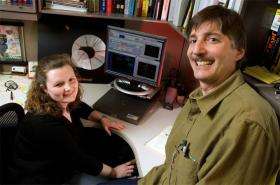New NASA 'Tool Set' Will Simplify Engineers' Efforts to Better Analyze Space Travel Concepts

It's a complicated process -- analyzing potential missions to other planets. Yet the highly technical task may go more smoothly in the future, thanks to a new set of NASA software tools.
The new "tool set," called Low-Thrust Trajectory Tools (LTTT), will help engineers better analyze space-travel concepts and missions that use low-thrust propulsion technologies. Thrust is what propels a vehicle -- enabling massive, towering rockets to lift heavy payloads free from Earth's gravity. Unlike conventional chemical rocket-driven systems, low-thrust technologies offer the promise of space travel using the sun's energy to propel spacecraft, greatly reducing the amount of fuel needed to travel in space. Such technologies include solar electric and solar sail propulsion.
The five tools are used to analyze simple Earth-centered and complicated multiple-body missions using any of a variety of propulsion systems. "The new tools were designed to improve mission analysis and better support technology-development decisions across NASA," said Melody Herrmann of NASA's Marshall Space Flight Center, Huntsville, Ala. Herrmann is the manager of the Technology Planning and Systems Analysis area within NASA's In-Space Propulsion Technology (ISPT) Project.
The development of the tool set was funded by the In-Space Propulsion Technology Program, a NASA program managed by the Science Mission Directorate at NASA Headquarters. The program is implemented at the Marshall Center by the In-Space Propulsion Technology Project, an organization charged with developing new propulsion technologies for robotic science missions.
The collaborative effort began in 2002 when managers at NASA Headquarters identified the need to standardize and improve tools used for mission analysis. The effort, led by Marshall's Larry Kos of the Advanced Concepts Office, brought together four NASA Centers -- the Glenn Research Center, Cleveland, Ohio; the Jet Propulsion Laboratory, Pasadena, Calif.; the Johnson Space Center, Houston and the Marshall Center -- to develop the new tools.
"Some of the original tools were difficult to use, lacked user guides or only operated on certain computer systems," said Kos. "Use of different tools generated inconsistent results for similar missions. In contrast, the new tool set ensures more consistent and accurate analysis across the mission analysis community, with documentation to help educate and train the analysts."
The new tools embody the latest advances in low-thrust trajectory design and optimization. Early versions of these tools have been used by scientists and engineers in concept studies including NASA's Robotic Lunar Exploration Program, a series of robotic missions to support human exploration of the moon, and Dawn, a solar electric propulsion Discovery mission.
The tools already have proven their merit in the international arena. The Jet Propulsion Laboratory used one of the tools from the LTTT tool set, MALTO -- short for Mission Analysis Low-Thrust Optimization -- to win the European Space Agency's International Mission Design Competition in January 2006 with their design for an asteroid intercept mission that included multiple flybys of Earth, Venus, Saturn and Jupiter. The design was judged the most optimal of 12 submissions from space agencies all over the world.
"These world-class tools will provide excellent analysis for in-space transportation planning and pave the way for NASA's mission analysis community to infuse low-thrust technologies into future mission plans," said Rae Ann Meyer, manager of the In-Space Propulsion Technology Project at the Marshall Center.
The roll-out of LTTT Version 1 and demonstration of the set of tools is the focus of the Low-Thrust Technology Technical Interchange Meeting hosted by the Marshall Center March 28-29. The tools and guides will be accessible on the Web at: www.inspacepropulsion.com/LTTT
Source: NASA















